Fall is a magical season for gardens, offering a rich palette of warm colors, textures, and natural beauty. Unlike spring and summer, when flowers dominate, fall gardens rely on thoughtful layering, diverse foliage, and seasonal blooms to create visual interest. Designing a fall garden with stunning color layers requires planning, creativity, and an understanding of plants that thrive in autumn conditions. By strategically combining textures, heights, and colors, you can create a garden that captivates and maintains beauty long after summer ends.
1. Understanding the Basics of Fall Color
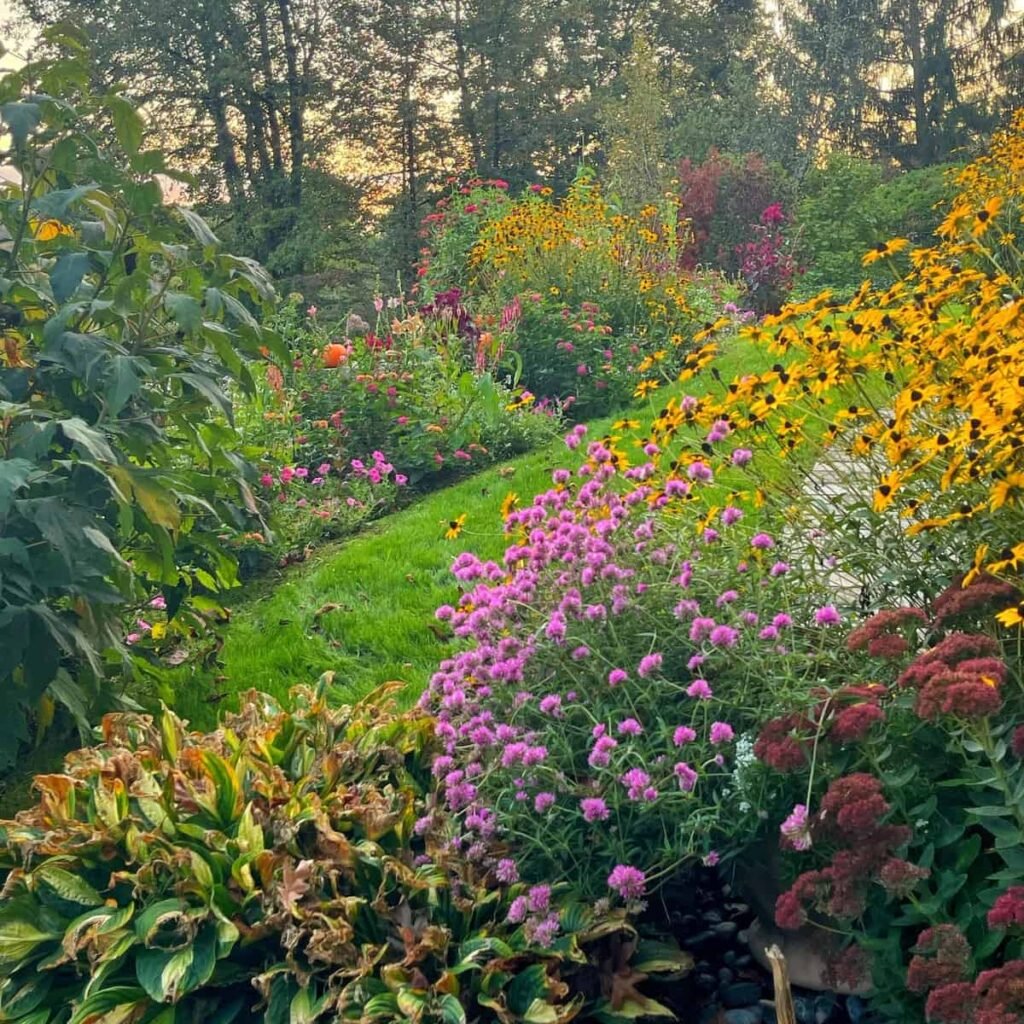
Before planting, it’s essential to understand what gives a fall garden its unique charm. Fall color comes from three primary sources: foliage, flowers, and ornamental features like berries and seed heads.
- Foliage: Many trees, shrubs, and perennials change color in fall. Shades of red, orange, yellow, and burgundy can create a vibrant tapestry. Maples, oaks, and dogwoods are classic examples of trees that transform dramatically in autumn. Shrubs like burning bush (Euonymus alatus) and barberry provide intense red foliage, while Japanese maple adds elegance with delicate, lace-like leaves.
- Flowers: Some late-blooming perennials and annuals extend the color season. Chrysanthemums, asters, sedum, and ornamental kale provide deep purples, pinks, and rich reds.
- Ornamental Features: Don’t overlook berries, seed heads, and grasses. Holly and beautyberry shrubs add pops of color, while ornamental grasses like switchgrass and fountain grass add texture and movement.
Understanding these elements allows you to layer plants for maximum visual impact.
2. Plan Your Garden Layers
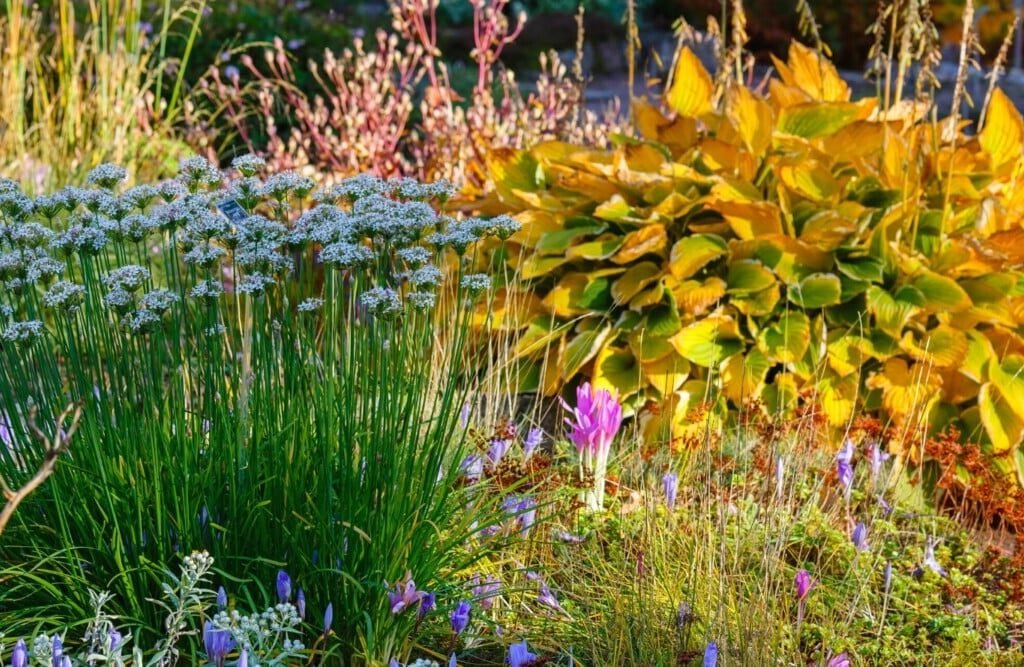
A stunning fall garden depends on layering plants to create depth, movement, and contrast. Layers provide structure and allow each plant to shine. Consider the following layering techniques:
- Height Layering: Place taller trees and shrubs at the back or center, mid-height perennials in the middle, and low-growing ground covers in the front. This arrangement ensures that all plants are visible and creates a sense of fullness. For example, a backdrop of golden maple trees with burgundy barberry in the middle and purple asters in the foreground is both dramatic and harmonious.
- Color Layering: Combine colors strategically. Warm shades like red, orange, and yellow evoke energy, while cooler shades like purple and deep green add contrast. Pairing complementary colors, such as golden foliage with deep purple flowers, creates striking visual effects.
- Texture Layering: Mix textures for added depth. Large, bold leaves of hostas can contrast beautifully with delicate grasses or feathery ferns. Rough barked shrubs combined with smooth-leaved plants provide tactile interest and visual variety.
- Seasonal Transition Layering: Include plants with staggered peak color times to ensure continuous visual interest throughout fall. Early-turning maples, mid-season asters, and late-blooming mums keep your garden vibrant from September through November.
By combining height, color, and texture, your fall garden becomes multidimensional, dynamic, and visually captivating.
3. Choose the Right Plants for Fall Layers
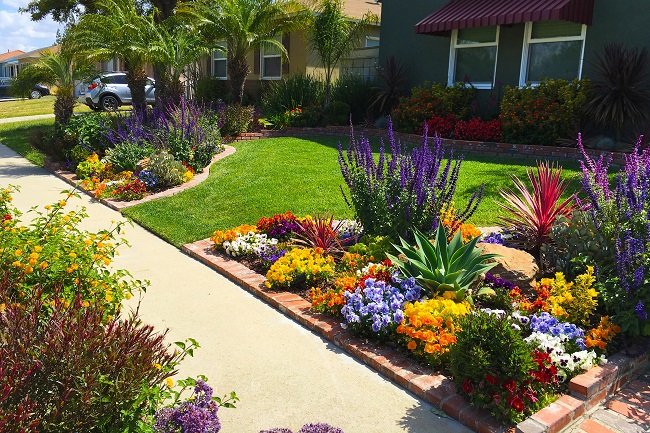
Selecting the right plants is key to achieving stunning color layers. Here’s a guide to plant selection by layer:
Tall Layer (Trees and Large Shrubs)
- Maple (Acer spp.): Brilliant reds and oranges.
- Oak (Quercus spp.): Deep rusts and browns.
- Dogwood (Cornus spp.): Striking red berries and fall foliage.
- Burning Bush (Euonymus alatus): Vibrant red leaves that intensify in late fall.
Mid Layer (Shrubs and Perennials)
- Hydrangea: Some varieties transition from green to deep burgundy.
- Asters: Purple and pink flowers that bloom late in fall.
- Sedum (Autumn Joy): Rich pinks and rusty reds, perfect for late-season interest.
- Ornamental Kale and Cabbage: Bold foliage with rich colors and textures.
Low Layer (Ground Covers and Borders)
- Heuchera (Coral Bells): Vibrant foliage ranging from deep burgundy to bright lime.
- Pansies and Violas: Late-blooming flowers in purples, yellows, and oranges.
- Creeping Jenny (Lysimachia nummularia): Golden foliage that spreads along borders.
- Moss and ornamental grasses: Adds subtle color and texture variation.
4. Incorporate Colorful Accents and Focal Points
While plants provide the foundation of your fall garden, accents and focal points elevate its visual impact. Consider adding:
- Decorative Containers: Pots filled with chrysanthemums, ornamental kale, or grasses placed strategically on patios, steps, or along pathways provide bursts of color.
- Pathways: Curved stone or brick paths draw the eye and lead visitors through the colorful layers of your garden. Edging plants like low boxwoods or creeping thyme enhance definition.
- Garden Ornaments: Seasonal decorations, like pumpkins or gourds, can complement your color palette naturally. A rustic bench framed by autumn blooms creates an inviting focal point.
- Lighting: Solar or low-voltage landscape lights accentuate the warm tones of foliage and flowers during evening hours, creating a magical effect.
5. Consider Seasonal Maintenance and Color Longevity
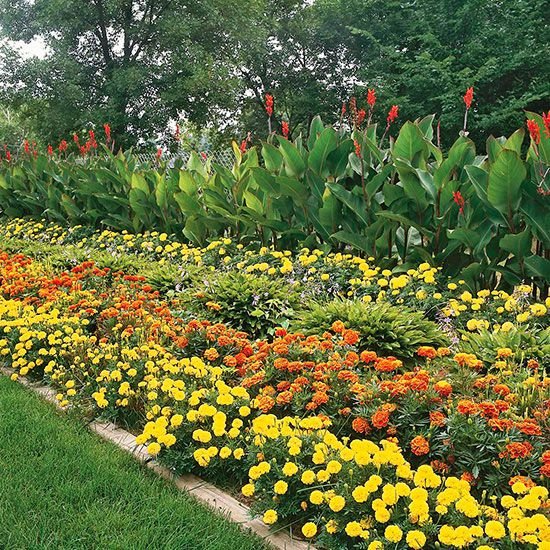
A well-designed fall garden requires some maintenance to keep colors vibrant. By planning for seasonal changes, you ensure lasting beauty throughout autumn:
- Deadheading: Remove spent flowers from perennials like asters and chrysanthemums to encourage continuous bloom.
- Mulching: Apply a layer of mulch around plants to retain moisture and provide a contrasting backdrop that makes colors pop.
- Pruning: Trim dead or overcrowded branches to maintain shape and allow sunlight to reach lower layers.
- Watering: Although fall is generally cooler, ensure that shrubs and perennials receive adequate water, especially new plantings.
- Plant Protection: Some tender perennials or ornamental plants may need light frost protection or temporary covers during early cold snaps.
Regular maintenance preserves the visual harmony and ensures that color layers remain vivid through the fall season.
6. Design with Color Progression in Mind
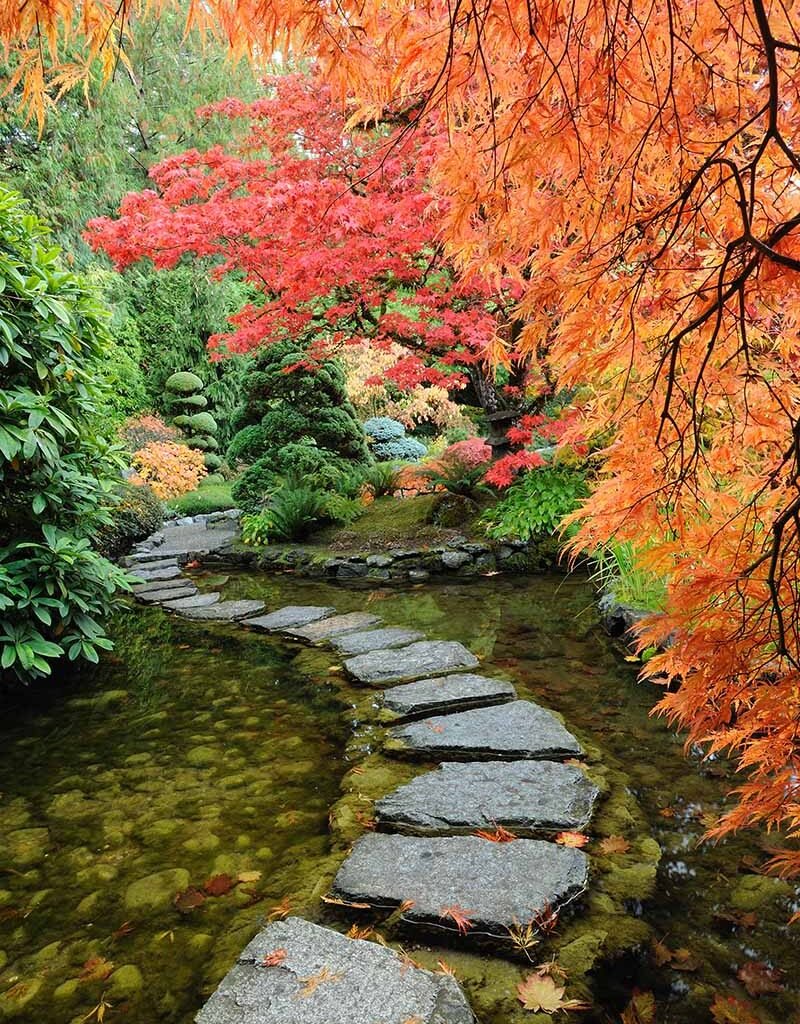
One of the most effective ways to create a stunning fall garden is by designing with color progression. This technique involves arranging plants so that colors transition naturally from one area to another. For example:
- Start with golden-yellow foliage near the entrance.
- Transition to deep oranges and reds in the mid-garden.
- End with purple and burgundy tones near focal points like benches or fountains.
This gradient effect mimics the natural changes of fall and creates a cohesive, flowing aesthetic that feels intentional and dynamic.
7. Use Ornamental Grasses for Movement and Texture
Ornamental grasses are often overlooked but play a crucial role in fall gardens. They provide height, movement, and texture, enhancing layered designs. Some popular choices include:
- Fountain Grass (Pennisetum alopecuroides): Soft, feathery plumes with reddish hues.
- Switchgrass (Panicum virgatum): Stiff vertical blades that turn gold or orange.
- Blue Fescue (Festuca glauca): Adds a subtle blue-gray tone and fine texture.
Grasses move with the wind, adding dynamic interest that complements static shrubs and perennials.
Conclusion
Designing a fall garden with stunning color layers is both an art and a science. By combining foliage, flowers, and ornamental features, and layering them strategically by height, color, and texture, you can create a garden that is visually compelling throughout the autumn months. With careful plant selection, thoughtful focal points, and seasonal maintenance, even a small garden can become a rich tapestry of fall colors.
Whether your goal is to enhance curb appeal, provide a peaceful retreat, or impress visitors, these design strategies allow you to embrace the beauty of fall fully. By planning for progression, contrast, and texture, you transform your outdoor space into an autumn paradise that is vibrant, harmonious, and full of seasonal charm.
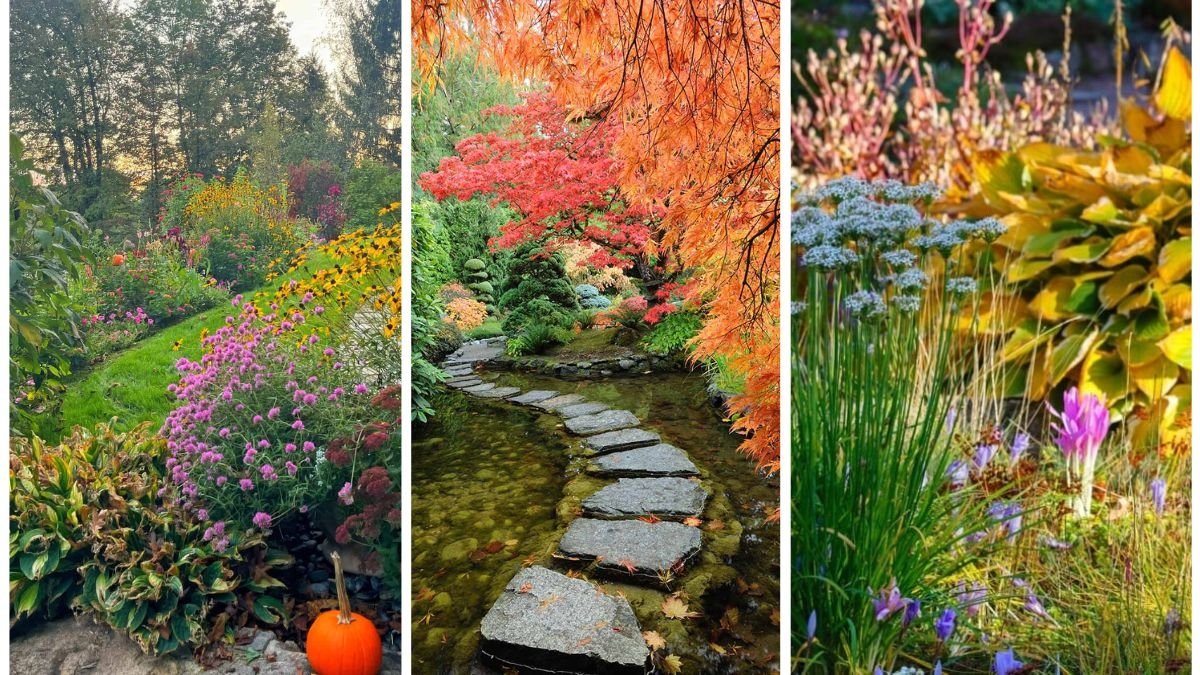
Leave A Comment